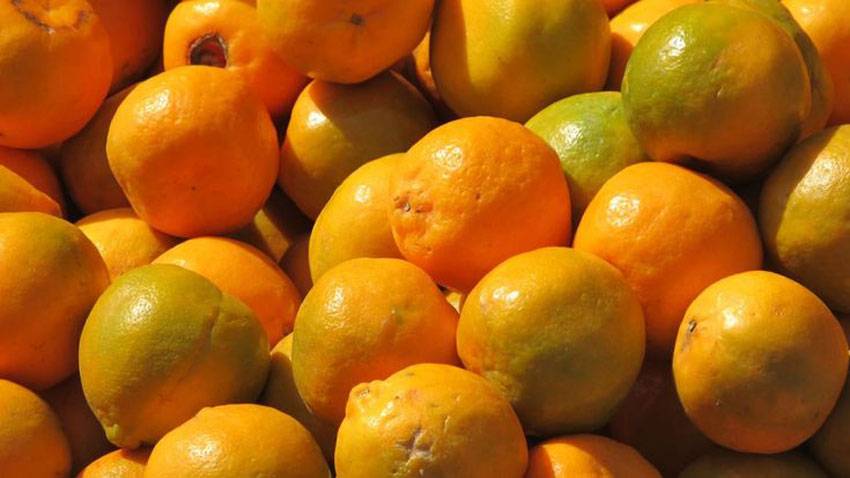Crops
Orange

Orange
Orange (Santra) Cultivation in India: A Comprehensive Guide
Orange, commonly known as Santra in India, is one of the most popular and commercially important citrus fruits cultivated across the country. India ranks among the top five orange-producing countries in the world, with an annual production of approximately 80 to 90 lakh tonnes. The total area under orange cultivation spans nearly 3.8 to 4 lakh hectares. The state of Maharashtra, particularly the Nagpur region, is renowned for producing the finest quality oranges, with the "Nagpur Orange" even earning a Geographical Indication (GI) tag. Other major orange-producing states include Madhya Pradesh, Punjab, Rajasthan, Assam, Himachal Pradesh, and Karnataka.
Oranges thrive best in sub-tropical to tropical climates. They require a moderate temperature range between 15°C and 35°C, with annual rainfall ranging from 750 mm to 1000 mm. While they can be cultivated at elevations between 500 to 1000 meters, the crop is sensitive to frost and extreme cold, making frost-free regions ideal for commercial farming. Abundant sunlight is essential for healthy fruit development and high yields.
Soil plays a crucial role in the success of orange orchards. Well-drained, loamy soils with a pH range of 5.5 to 7.5 are considered most suitable. Growers should avoid waterlogged or saline soils, which can severely impact plant health and fruit quality. Incorporating organic matter and ensuring proper soil aeration through deep ploughing helps improve soil fertility and promotes root development.
Beyond their economic importance, oranges offer a wealth of health benefits. They are an excellent source of Vitamin C, which boosts immunity and protects against infections. The fruit is rich in antioxidants, helps in collagen formation for healthy skin, and supports heart health by managing cholesterol and blood pressure levels. Oranges also aid digestion due to their dietary fiber content and are a hydrating, low-calorie snack ideal for weight management.
India exports oranges to several countries, including Bangladesh, Nepal, the UAE, the UK, Russia, and other Southeast Asian nations. Although exports face challenges such as perishability, limited cold-chain infrastructure, and the need for standardized grading and certification, there are significant opportunities for growth. Nagpur oranges, in particular, are in high demand overseas. The development of value-added products such as juice, squash, marmalade, and candied peels further enhances the export potential. The Agricultural and Processed Food Products Export Development Authority (APEDA) supports growers and exporters through subsidies, training, and market access initiatives.
In recent years, orange cultivation in India has seen several advancements. Farmers are adopting high-density planting techniques, drip irrigation systems, and integrated nutrient and pest management practices. Improved packaging, branding, and cold storage facilities are also contributing to better returns and quality preservation. With increasing awareness, government support, and technological interventions, orange cultivation is emerging as a profitable venture for Indian farmers while also offering consumers a nutritious and refreshing fruit.
Blog
Explore Our Blog
About Us
Welcome to Agriplaza
Welcome to Agriplaza. India's first and only comprehensive digital platform dedicated to agriculture and farmers. Explore widest range of related data our figures speaks a lot.
738081
Visitors
239
Diseases
131
Pests




